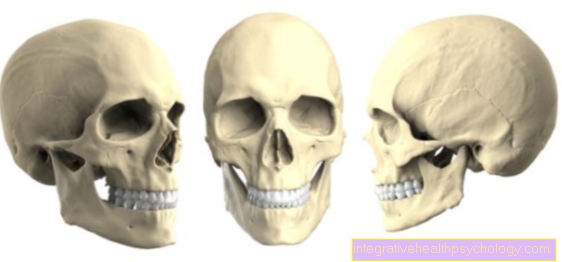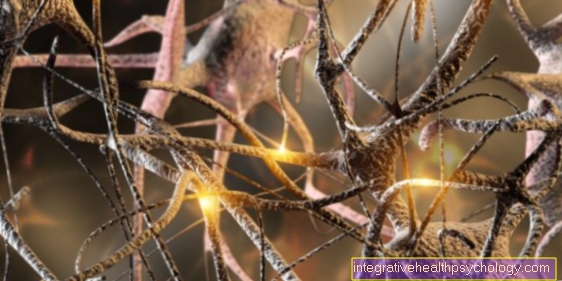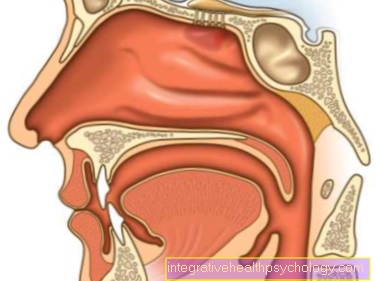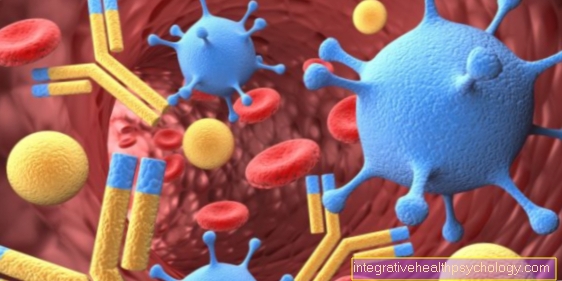Parkinson's Syndrome
definition
Parkinson's syndrome is a disease with typical symptoms that restrict movement. These symptoms are immobility (akinesia) or slow movement, muscle rigidity (rigidity), muscle tremors (resting tremor), and postural instability (postural instability).
Symptoms are caused by a lack of dopamine, a neurotransmitter that controls how the brain moves. The symptoms do not always have to be present at the same time. There are four groups within Parkinson's syndrome: Parkinson's disease, genetic forms, atypical Parkinson's syndromes, and secondary forms.
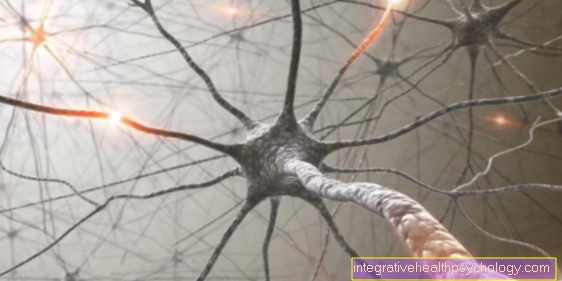
What is the difference to Parkinson's disease?
The difference to Parkinson's disease is that Parkinson's syndrome is just a description of a group of symptoms, while Parkinson's disease is a disease.
With Parkinson's disease, also known as idiopathic Parkinson’s syndrome, one suffers from the typical symptoms of Parkinson’s syndrome. It arises due to the destruction of the dopamine-containing nerve cells in the brain.
The reason for this destruction of nerve cells has not yet been clarified and the disease is unfortunately not curable. Most of the time, the symptoms start on one side and remain asymmetrical over time. The disease has a progressive course and can begin with early symptoms such as loss of smell, depression and difficulty sleeping.
Read helpful information on this topic at: Everything about the tremor!
Causes of Parkinson's Syndrome
The causes of Parkinson's syndrome can be divided into the four groups already mentioned.
- The first and most common cause (75% of those affected) is Parkinson's disease. The cause of this is still unclear and is probably multifactorial, i.e. influenced by several factors. Genetics seem to play a role, however.
- The second, much rarer cause is the purely genetic form of Parkinson's syndrome. This disease is hereditary and therefore occurs more frequently in affected families. There is the possibility of doing a genetic test to make the diagnosis.
- The third group are the atypical Parkinson's syndromes. Here nerve cells are also destroyed, but due to a different neurodegenerative disease. This downfall causes Parkinson's syndrome, but also additional symptoms. The course of the disease differs from Parkinson's disease and the response to the medication is limited.
- Finally, Parkinson's syndrome can develop secondarily. Most often as a side effect of drugs that inhibit the release or effect of dopamine. Other causes can be tumors, circulatory disorders, metabolic diseases and inflammation.
Symptoms of Parkinson's Syndrome
Parkinson's syndrome typically consists of a sedentary lifestyle or lack of movement (brady / akinesia). This symptom must be accompanied by at least one other symptom.
Typically muscle rigidity (rigidity), muscle tremors (resting tremor) or postural instability (postural instability) occur. Parkinson's disease starts with the early symptoms mentioned above.
In the clinical phase, the movement disorders are usually one-sided. The movements slow down and become smaller and smaller. The gait becomes small and unsteady.
Often there are difficulties starting or stopping. The arms no longer swing when walking and patients fall much more often. But not only the movement of the body is impaired, the facial expressions also become less.
The voice becomes quieter and difficulty swallowing may occur. Patients can often get dizzy and "black in front of their eyes". Urination disorders and sexual dysfunction can also occur.
Finally, in the late stages, patients may also suffer from psychiatric symptoms such as anxiety disorders or dementia. Depending on the type of Parkinson's syndrome, the symptoms and the course differ.
This topic could also be of interest to you: Trembling hands in adolescence
These stages exist
Parkinson's disease can be divided into three phases.
The first is the pre-clinical phase, where there are no symptoms. This phase is currently being researched in order to find clues for the early detection of Parkinson's disease.
The so-called prodromal stage follows and can last for years to decades. The early symptoms appear here: reduced odor perception (hyposmia), depression, constipation and sleep disorders.
Finally, there is the clinical phase, when the movement disorder begins and the diagnosis can be made.
Diagnosing Parkinson's Syndrome
In order to make the correct diagnosis, a detailed interview and physical examination must take place first and foremost.
Magnetic resonance imaging of the brain is performed to rule out secondary or atypical Parkinson's disease. In Parkinson's disease, this should be normal.
The L-Dopa test is carried out as a further examination, in which the effectiveness of a dopamine preparation is checked. In the case of Parkinson's disease, it should improve the symptoms significantly. In addition, there is the possibility of a special imaging diagnosis (IBZM-SPECT) if the distinction between Parkinson's disease and atypical Parkinson's disease is not clear.
Treatment of Parkinson's Syndrome
The main goal of Parkinson's disease treatment is to correct the dopamine deficiency.
There are several preparations for this. However, the most important active ingredient is L-Dopa. The choice of medication depends on the severity of the symptoms, the age of the patient and concomitant diseases.
In the initial phase with milder symptoms, you can take a so-called MAO-B inhibitor. A non-ergot dopamine agonist is given if the symptoms are more pronounced and if the age is less than 70 years. If this is insufficient, it can be combined with L-Dopa.
If the patient is over 70 years old or seriously ill, L-Dopa is started right away. As it progresses, the effects of L-Dopa can become less reliable and fluctuate during the day.
To avoid these fluctuations, L-Dopa is combined with other drugs that stabilize its effect. In the case of swallowing disorders and digestive difficulties, there is also the option of placing a tube over the abdominal wall in the intestine and then giving the medication.
Another option would be a pump that is placed under the skin. In some cases, deep brain stimulation is also an option, in which a kind of pacemaker controls the movement center in the brain.
Finally, supportive therapies such as physiotherapy, speech therapy and occupational therapy are very important in order to slow down the symptoms and avoid complications.
For detailed information on the treatment of Parkinson's disease, see: MAO inhibitors
Duration of Parkinson's Syndrome
The duration of Parkinson's syndrome depends on the form. In the case of secondary forms, the cause can be cured by removing the cause.
The other forms are unfortunately not curable and thus the duration is lifelong.
Life expectancy with Parkinson's Syndrome
Patients with Parkinson's disease can have a normal life expectancy with good therapy!
The first fluctuations in the effectiveness of the drugs appear in the first ten years. Most of those affected require care within around 20 years of illness. Usually the causes of death are complications of the disease, such as pneumonia or infections.


